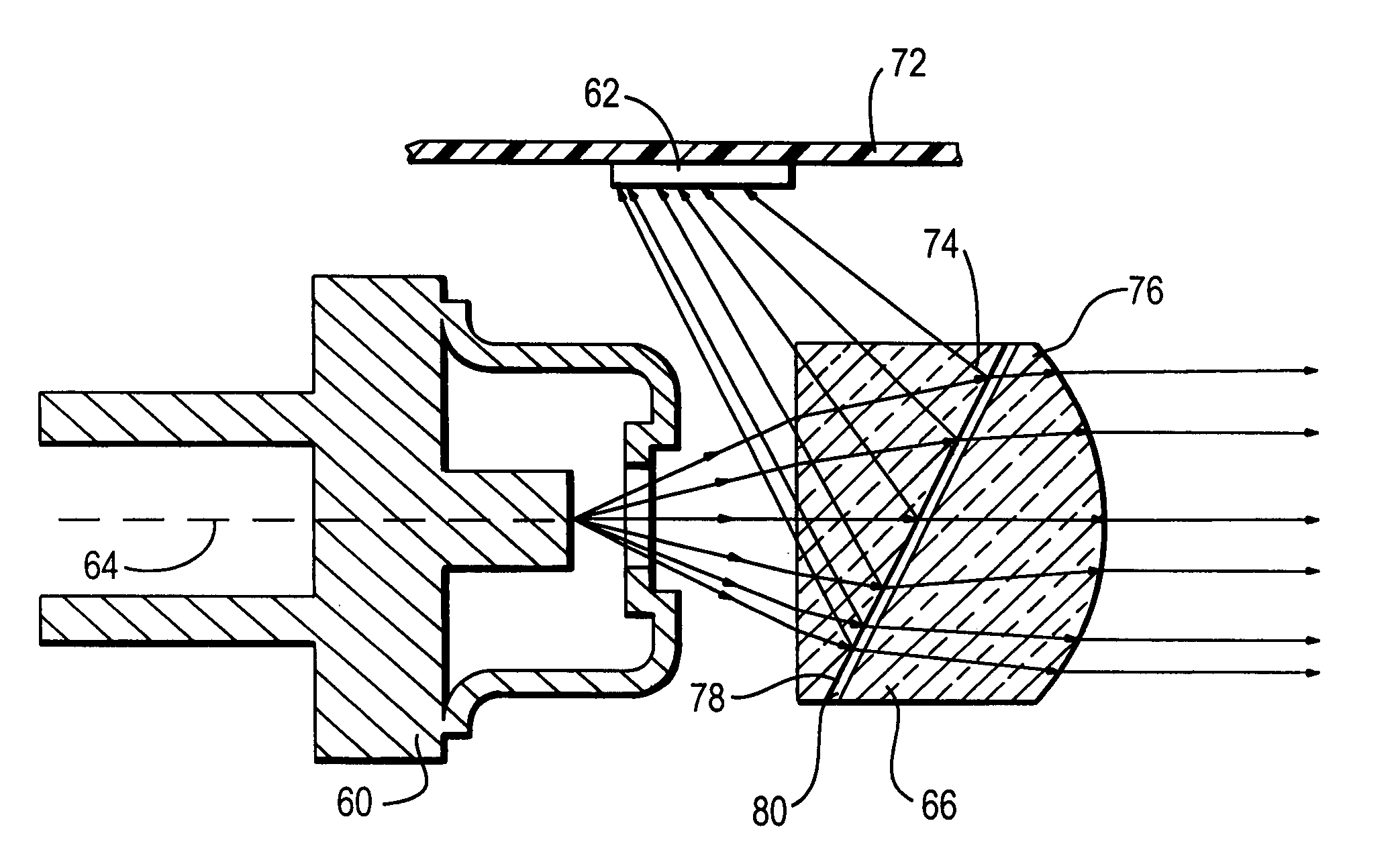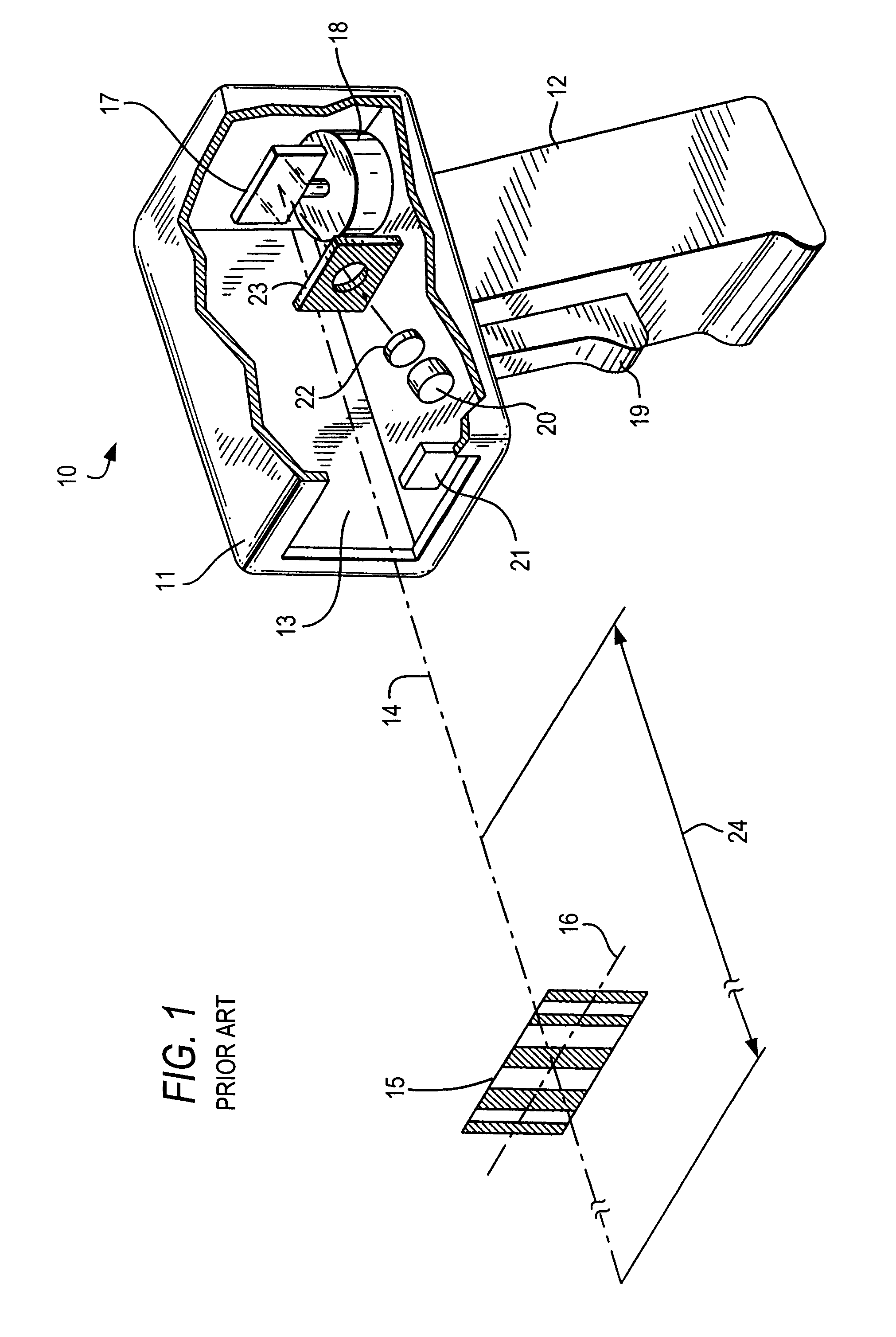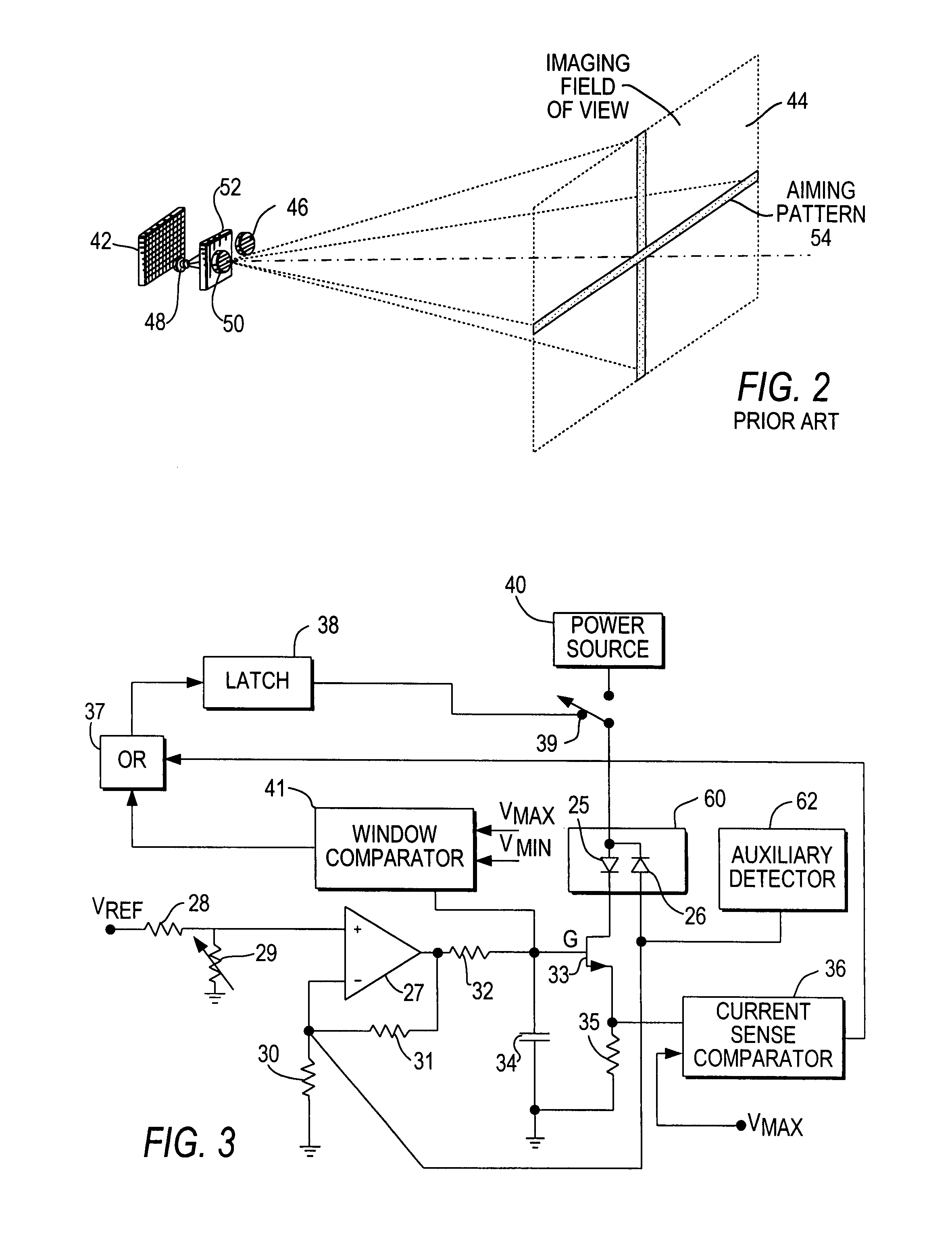Enhanced monitoring of laser output power in electro-optical readers
a technology of electro-optical readers and laser output power, which is applied in the direction of mirrors, instruments, sensing record carriers, etc., can solve the problems of failure of the reading laser to be reliably monitored, the use of imaging readers is often frustrating, and the malfunction of moving laser beam readers, etc., to improve the detection and monitoring of the output power of the laser, enhance signal reception, and increase safety and reliability
- Summary
- Abstract
- Description
- Claims
- Application Information
AI Technical Summary
Benefits of technology
Problems solved by technology
Method used
Image
Examples
Embodiment Construction
[0021]As used herein, the term “symbol” broadly encompasses not only symbol patterns composed of alternating bars and spaces of various widths as commonly referred to as bar code symbols, but also other one- or two-dimensional graphic patterns, as well as alphanumeric characters. In general, the term “symbol” may apply to any type of pattern or indicia that may be recognized or identified as a representation of variations in light reflectivity at various points of the pattern or indicia. FIG. 1 shows an indicium 15 as one example of a “symbol” to be read. The term “target” broadly encompasses any one- or two-dimensional symbol, as well as any other object to be imaged, including non-symbols, documents, people, etc.
[0022]FIG. 1 depicts a known handheld moving laser beam reader 10 for reading symbols. The reader 10 includes a housing having a barrel portion 11 and a handle 12. Although the drawing depicts a handheld pistol-shaped housing, the invention may also be implemented in other...
PUM
 Login to View More
Login to View More Abstract
Description
Claims
Application Information
 Login to View More
Login to View More - R&D
- Intellectual Property
- Life Sciences
- Materials
- Tech Scout
- Unparalleled Data Quality
- Higher Quality Content
- 60% Fewer Hallucinations
Browse by: Latest US Patents, China's latest patents, Technical Efficacy Thesaurus, Application Domain, Technology Topic, Popular Technical Reports.
© 2025 PatSnap. All rights reserved.Legal|Privacy policy|Modern Slavery Act Transparency Statement|Sitemap|About US| Contact US: help@patsnap.com



